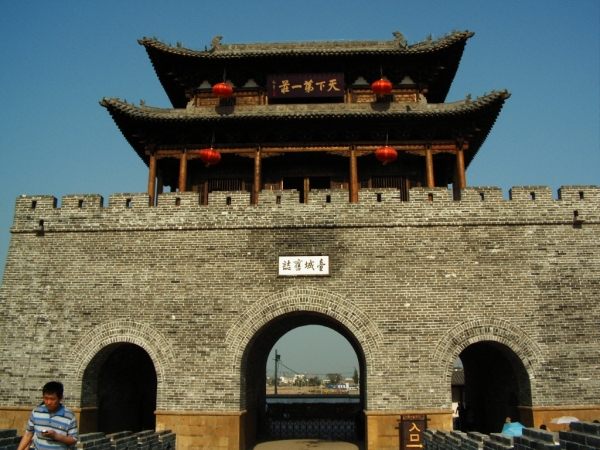
Yunhe Dagu can be traced back 400 years and was once very popular in the canal areas. Most of the stories performed are adapted from traditional Chinese literature, and told in rhyming verse with expressive body language.
Shadow Play is shown regularly at the covered corridor by the street. In modern China, there are three main schools of this art: Tangshan, Henan and Shandong puppetry, which can be divided into two main branches, Northern Shandong and Southern Shandong. The latter, which is shown in Tai’erzhuang, is sung raucously with more freedom, and combines the essence of indigenous operas and folk tunes.
Tai’erzhuang is a confluence of cultures and traditions from all over China, ranging from those of the northern plains and the Yangtze River to lesser-known ones from the Yunnan-Guizhou Plateau. Dixi Opera from Anshun City of Guizhou Province, for instance, is regarded as “the living fossil of China’s Opera,” having evolved from exorcism rituals in prehistoric times. Its performers wear a wooden mask and jump while singing in local dialect.
Embracing its history – from prosperity of the Grand Canal to the destruction during WWII – Tai’erzhuang has been rejuvenated with splendor, integrating the power and grandeur of northern China and the charms of the south into its natural beauty.
Travel
China’s victory in the Battle of Tai’erzhuang was the nation’s first on the frontline after the War of Resistance against Japanese Aggression broke out. The restoration of the ancient town included displays of photographs of the battle.
At present, 53 WWII sites, still bearing the scars of the war, and abundant cherished photos taken by war correspondents are preserved in Tai’erzhuang.
Scenic spots:
Buyun
(Stepping onto Clouds) Bridge:
Built on three levels, this bridge symbolizes promotion in officialdom.
Anlan (Subjugating Torrents) Gate:
Opposite Buyun Bridge stands Anlan Gate, established on the inner part of the Grand Canal with the function of safeguarding the town and storing water. Every year on the second day of the second lunar month, people hold a ceremony in front of the gate to express their best wishes for the town.
Fufengtang
Mansion:
Once the magnificent residence of the Wan family, one of the four richest families of Tai’erzhuang during the Qing Dynasty, Fufengtang boasts typical Shanxi-style architecture. The whole building comprises a quadrangle-shaped complex with over 60 rooms. It is known as the most luxurious residence in Tai’erzhuang.
Tianhou (Heavenly Queen) Palace:
Tianhou Palace was once the ancestral hall of a businessman named Chen from Fujian Province and was later rebuilt to memorialize Mazu, the Chinese goddess of the sea. These days, the grandiose show “Emperor Qianlong visits Tai’erzhuang” is performed daily on the forecourt of the palace, which forms a beautiful backdrop to the story.
Yujia Pier:
The ancient mooring point was established in the late Ming Dynasty. Today, it is a private harbor for loading and unloading cargo, but its history can be traced back 400 years; its preservation is remarkable.
A multitude of ponds of different sizes are connected by open and covered channels that flow into the Grand Canal.
We Recommend:
